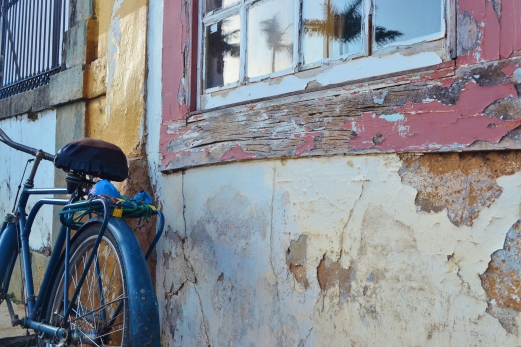
After an incredible trip to Brazil, I am back! I had an amazing time in Minas Gerais, where I am from, and want to share with you a few moments registered there. Enjoy!

After an incredible trip to Brazil, I am back! I had an amazing time in Minas Gerais, where I am from, and want to share with you a few moments registered there. Enjoy!

Another stunning view of São Francisco de Assis church, in São João del Rei .

CACHOEIRA DA FUMAÇA - CARRANCAS, MG
The picture speaks for itself…
That’s my sister, Vivian, enjoying the best Carrancas has to offer! 😉

Prados, “Presepe of Minas”.
🙂
Poetry in the narrow streets
music ♣ art ♣ faith
and the sound of silence
when you go for a walk
in the afternoon.


Train station in Tiradentes, MG
It feels like the 19th century. A colonial treasure, a different way to live.
And many memories from my early twenties, still in college, exploring town.

Namoradeiras are very common in Minas Gerais and also in Northeast Brazil. The beautiful sculptures are meant to be displayed on the window sill, and they depict a woman with her hand to her cheek, gazing at passersby in an effort to attract attention.
The word namoradeira can be roughly translated as “the flirter.” 😉
Born in Itabira, Minas Gerais, Carlos Drummond de Andrade was one of the most influential poets in Brazil in the 20th century. One of Drummond’s best-known poems is his hymn to an ordinary man, “José”.
The line, “José, what now?” became a popular expression in Brazil. Used many times when we face an impasse or a situation where solution isn’t obvious (or even impossible). One of the many Drummond’s lines that goes from generation to generation. You can read the Portuguese version here.

Drummond's statue in Rio de Janeiro
José
What now, José?
The party’s over,
the lights are off,
the crowd’s gone,
the night’s gone cold,
what now, José?
what now, you?
you without a name,
who mocks the others,
you who write poetry
who love, protest?
what now, José?
You have no wife,
you have no speech
you have no affection,
you can’t drink,
you can’t smoke,
you can’t even spit,
the night’s gone cold,
the day didn’t come,
the tram didn’t come,
laughter didn’t come
utopia didn’t come
and everything ended
and everything fled
and everything rotted
what now, José?
what now, José?
Your sweet words,
your instance of fever,
your feasting and fasting,
your library,
your gold mine,
your glass suit,
your incoherence,
your hate-what now?
Key in hand
you want to open the door,
but no door exists;
you want to die in the sea,
but the sea has dried;
you want to go to Minas
but Minas is no longer there.
José, what now?
If you screamed,
if you moaned,
if you played
a Viennese waltz,
if you slept,
if you tired,
if you died…
But you don’t die,
you’re stubborn, José!
Alone in the dark
like a wild animal,
without tradition,
without a naked wall
to lean against,
without a black horse
that flees galloping,
you march, José!
José, where to?

From the 35 churches in São João del-Rei, São Francisco de Assis is definitely my favorite. Maybe because I used to live next to it when I was in college, and have great memories of the neighborhood.
São João del-Rei is amazing, with the bells of the churches sounding differently to announce weddings, funerals and masses. The colonial buildings, the little bridges, the cobblestone streets… It is like living in the past, in a different pace.
São Francisco de Assis church was completed in 1774.
In every corner, someone is crafting. Resende Costa is known by the beautiful bedspreads, sofa throws, rugs and curtains handmade by amazing local artisans.
Below, cute handmade dolls, photo by Elias Francioni.

Minas Gerais developed along the centuries some chemistry in the kitchen that no other Brazilian state seems to posses. Minas brings in together Portuguese, Native Brazilian and African cuisines in the simplest way possible.

"Fogao a lenha" by Vinicius Matos
Pão de queijo is a symbol of our state. It is always served with coffee, and the smell that comes from the kitchen reminds our hospitality to guests by offering what has become our signature: an abundant table and good conversation – the way of the mountains.
To name a few of our traditional dishes: feijoada, pão de queijo, polenta and frango com quiabo. “Romeo and Juliet”, which is cheese served with guava paste (such a perfect combination that could not have another name!) is our most famous dessert.
Some recipes will follow next week!

If you were born in Minas Gerais… no matter where you go, you carry with you the smell, the taste, the peace of a place where people still prefer an old way of life.
In our small towns, hidden behind our mountains and hills, old-fashioned (yet creative) mineiros knit their lives, re-invent tradition, cook recipes that were taught by relatives a log time ago.
We appreciate the slow pace, endless conversation with friends and a cafezinho in the end of the day while watching the sundown…
Minas is beautiful. And ready to be (re) discovered.